Raccolta casi Working Model, visualNastran & SimWise - Las Vegas
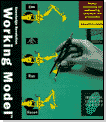
Contatto Editoriale:
Paolo Lista,
Lista Studio srl®
Borgo Belvigo 33, 36016 Thiene Vi ITALY
tel/fax 0445,372479 o info@lista.it
Working Model helps Cirque du Soleil demonstrate feasibility of large-scale illusions.
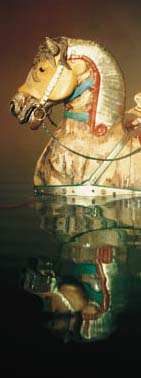 From the moment the lights go down on a Cirque du Soleil performance, it’s hard to know where reality ends and illusion begins. Like dreams, Cirque productions are surreal and unpredictable; a strange and magic brew of Houdini, art, and athleticism.
From the moment the lights go down on a Cirque du Soleil performance, it’s hard to know where reality ends and illusion begins. Like dreams, Cirque productions are surreal and unpredictable; a strange and magic brew of Houdini, art, and athleticism.
The company’s latest spectacular, "O," is no exception. With its waterborne stage, hovering mirrors, flying pirate ships, and myriad acrobats, swimmers and illusions, "O", is the epitome of Cirque du Soleil imagination and daring. But "O" is also a technological marvel, and many features of the production are enabled through collaborations between creators and project managers, using tools like AutoCAD and Working Model 3D mechanical simulation software.
"’O ‘is a show of massive proportions, even compared to the things we’ve already done" says Guy Plante, the aquatic props project manager. "Technologically speaking, it is the biggest, most advanced show we’ve ever put together."
Plante’s boasts aren’t exaggeration. "O" is housed in a twelve-story theatre on the grounds of Bellagio, one of Las Vegas’ newest, most prestigious hotels. The show is staged in and above a 140-foot-wide, 1.5 million gallon pool housing a submersible stage. There’s also a 20-foot-wide mirror, a 60-foot-high curtain of Plexiglas, and a midway suspended 60 feet in the air from which acrobats plunge to the pool below.
If it sounds awesome, that’s because set designer Michel Crête conceives all of his work to be just that. As Plante explains, "the Cirque’s goal is always to make every production unique and fantastic."
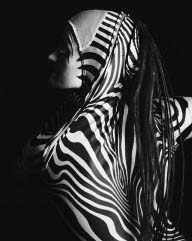 In Cirque’s new shows, technical lighting, special effects and mechanical elements are sometimes used to make sets more dynamic and highlight the performances of the cast. In the case of "O," however, many of Crête’s creative whims challenged the skills of project managers testing their feasibility. "Cirque always uses scale models and drawings to demonstrate concepts," explains Plante. "But so many of "O’s" elements are so big and heavy, and the safety risk so great that even the best scale model couldn’t tell us anything about material properties, mass, or friction. We weren’t going to get the data we needed from fishing wire and cardboard."
In Cirque’s new shows, technical lighting, special effects and mechanical elements are sometimes used to make sets more dynamic and highlight the performances of the cast. In the case of "O," however, many of Crête’s creative whims challenged the skills of project managers testing their feasibility. "Cirque always uses scale models and drawings to demonstrate concepts," explains Plante. "But so many of "O’s" elements are so big and heavy, and the safety risk so great that even the best scale model couldn’t tell us anything about material properties, mass, or friction. We weren’t going to get the data we needed from fishing wire and cardboard."
Cirque du Soleil first used simulation software somewhat unconventionally — to experiment with the simulation of acrobatic stunts. But when presented with the challenge of realizing Crête’s most ambitious visions yet, Plante recognized the value of computer simulation to demonstrate the viability of the complex mechanicals that make them reality.
From Artistic Inspiration to Working Reality
Guy Plante’s job is unique in engineering circles. Where most engineers are trying to attain a specified level of performance in a product, Plante’s primary goal is to deliver functional stage props that also acheive a desired aesthetic. "Ordinarily an engineer is designing something to a very strict specification," says Plante. "But at Cirque the mission is to deliver the most aesthetically pleasing result. It’s an unusual approach to problem solving."
Plante’s first project for "O," the 60-foot-tall Vegee Curtain was no less an adventure. For starters, Plante had to determine whether it was possible to move the curtain in the way Crête envisioned.
 "Every Cirque du Soleil show takes a very theatric approach to set design," explains Plante. "The stage must evolve to accommodate the changes in a plot or scene. In "O," set elements are always moving, so our first priority was to figure out how to move, and more importantly, conceal the set elements."
"Every Cirque du Soleil show takes a very theatric approach to set design," explains Plante. "The stage must evolve to accommodate the changes in a plot or scene. In "O," set elements are always moving, so our first priority was to figure out how to move, and more importantly, conceal the set elements."
Because the Vegee Curtain is constructed from 6000 square feet of flexible Plexiglas, movement of any kind induced a swaying motion, affecting tension in two cables and a third guide cable. Using Working Model 3D simulation software, Plante determined that he could use an arc motion to safely move the curtain behind the main stage without disrupting the performance or wasting theater space.
"When we move the curtain in an arc, the tension changes every second," explains Plante. "But by changing a few values in Working Model I could consider how an acceleration or shift in the axis of motion would affect the curtain at any point. Through the software simulations I came to a very thorough understanding of the curtain’s limitations and capacity very quickly."
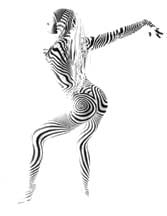 Simulation and analysis of another of Crête’s inspired set elements — the 20 foot mirror that Cirque initially designed to rise from "O’s" watery stage — proved to be an even greater challenge. The mirror’s complex range of motion, which includes a 90 degree pivot before rising vertically into a three foot slot in the ceiling, meant consideration of cable tension and positioning at four cable mounts rather than two. Accurate calculation of the mirror’s performance was further complicated by consideration of its movement through the pool, from which the mirror was originally designed to rise.
Simulation and analysis of another of Crête’s inspired set elements — the 20 foot mirror that Cirque initially designed to rise from "O’s" watery stage — proved to be an even greater challenge. The mirror’s complex range of motion, which includes a 90 degree pivot before rising vertically into a three foot slot in the ceiling, meant consideration of cable tension and positioning at four cable mounts rather than two. Accurate calculation of the mirror’s performance was further complicated by consideration of its movement through the pool, from which the mirror was originally designed to rise.
"We had to know if we could support the mirror as it moved through the water and how motion would change as it emerged," recalls Plante. To do so, Plante approximated the effect of water by multiplying values for air density by 800 in Working Model. Plante then moved the mirror through it’s full range of motion, analyzing the effect of different values for cable strength and acceleration, until determining the optimum figures for a balanced ascent.
As mechanical features become more commonplace in some Cirque du Soleil performances, simulation is becoming a more familiar part of the design process. And while simulation software has been used prevalently by project managers to verify the feasibility of director’s and designers concepts, designers themselves are now finding a place for tools like Working Model in their own work.
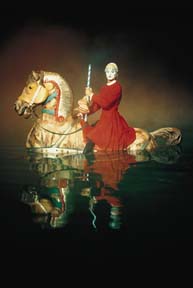 Johnny Boivin, a Cirque du Soleil assistant set designer who worked with Crête on Cirque’s last four productions, uses Working Model to analyze his concepts before the production commits time or personnel resources. He also takes advantage of the software’s flexibility to program for more specific analysis of unorthodox cable rigging configurations. "I’m not an engineer, but Working Model was very easy to program and adapt to my own needs," says Boivin "The software is very useful in establishing a design direction."
Johnny Boivin, a Cirque du Soleil assistant set designer who worked with Crête on Cirque’s last four productions, uses Working Model to analyze his concepts before the production commits time or personnel resources. He also takes advantage of the software’s flexibility to program for more specific analysis of unorthodox cable rigging configurations. "I’m not an engineer, but Working Model was very easy to program and adapt to my own needs," says Boivin "The software is very useful in establishing a design direction."
As Boivin’s experience attests, simulation software is evolving to become more capable and intuitive, meaning it will increasingly find a home beyond conventional engineering applications. For Cirque du Soleil, that accessibility means improved communication between the creators and set designers who conceive the outlandish and the project mangers who realize those visions.
But even in disciplines such as product design, similarly enhanced collaborations can help stimulate originality and spontaneity. As Plante explains, "software like Working Model makes communication of ideas easier. And whether you’re just trying to make something faster or understand an abstract idea, you have to start with that."
ALTRI 83 CASI IN SETTORI DIVERSI !
